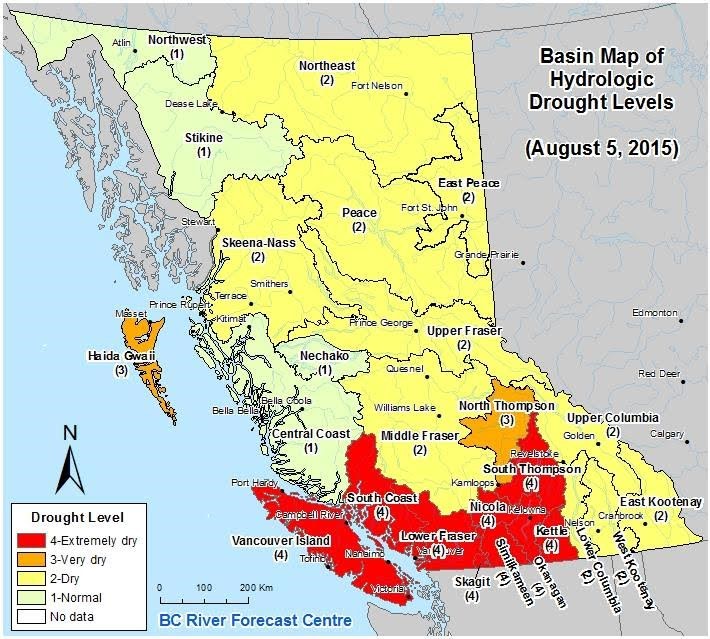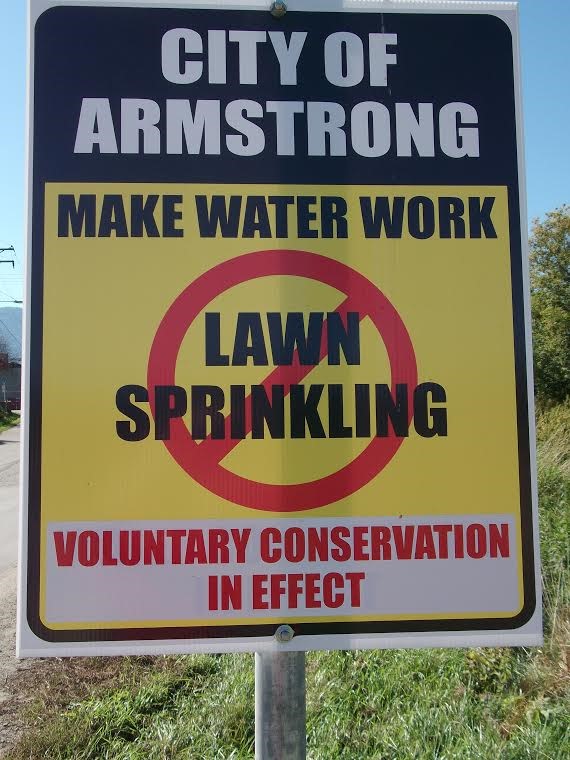
Sue McKortoff is upfront about how she’s conserving water.
The mayor of Osoyoos has embarrassed her kids by declaring publicly she doesn’t take showers every day. And when she does, she bathes for only three minutes.
The summer of 2015 drought has convinced McKortoff that conserving water is the “new normal” in the Okanagan. The town of Osoyoos is preparing to impose water restrictions early next year, she said, regardless of how much snow falls.
“We’re not going to allow free-rein watering any time anybody wants,” she said at a recent Osoyoos Lake Water Science Forum co-hosted by the Okanagan Basin Water Board (OBWB) and sponsored in part by IJC.

Earlier this year, a combination of low snowpack, low spring precipitation, early snowmelt and a warm, dry summer caught many in British Columbia off guard. Some communities came within days of running out of water, said Glen Davidson of the B.C. Water Management Branch.
The B.C. Ministry of Forests is planning for another warm season and dry, empty reservoirs in 2016.
“I think 2015 was a wake-up call,” Davidson told the Forum. “Everyone needs to make what water you have last longer.”

Scientists predict the Okanagan will face more frequent droughts. The summer of 2015 taught water managers they need to better coordinate their efforts and come up with a formal drought plan. According to Kellie Garcia, an environmental planner with Summit Environmental, water purveyors must avoid the “silo management” that fragmented the summer response and push for conservation even if reservoirs are healthy. Garcia has been tasked with helping the OBWB develop an Okanagan Drought Plan.
“By the time we were responding, it was already deep in the drought … There was a lot of confusion about what the province’s Level 3 and Level 4 Drought meant to the local utilities, and what the expectations were from the provincial government,” Garcia added.
“There needs to be stronger acceptance of the ‘One valley. One water.’ concept.”

Many property owners are reluctant to buy in, and have expressed concern that they must let their lawns go brown during a dry spell. They point to the valley’s lakes as abundant sources of water that provide ample irrigation, said McKortoff.
But dam operators must balance increasing water demands from communities in Washington state with the needs of irrigators and salmon swimming up the Columbia River system to spawn in Osoyoos and Skaha lakes, said Al Josephy, who manages Zosel Dam south of Osoyoos Lake according to direction of the IJC’s Osoyoos Lake Board of Control. Sockeye salmon suffered massive die-offs this year in the lower end of the Columbia. Those that managed to reach Canada couldn’t migrate up the Okanagan River because the water was too warm.
Farmers in Washington who depend on Okanagan water to irrigate their crops were cut off for weeks this summer.
“The river gets down to a certain level, they have to stop irrigating,” Josephy said.
Every spring, the OBWB’s Okanagan WaterWise program launches its “Make Water Work” campaign and encourages Okanagan residents to use water wisely and cut back waste. Garcia recommends the conservation program be expanded to year-round and continue to reach out to the utilities.
“The OBWB can take a leadership role, but it’s up to individual utilities to make sure their houses are in order. It can’t be up to the province or the OBWB to do that,” she said.

Okanagan Basin Water Board Contributor



